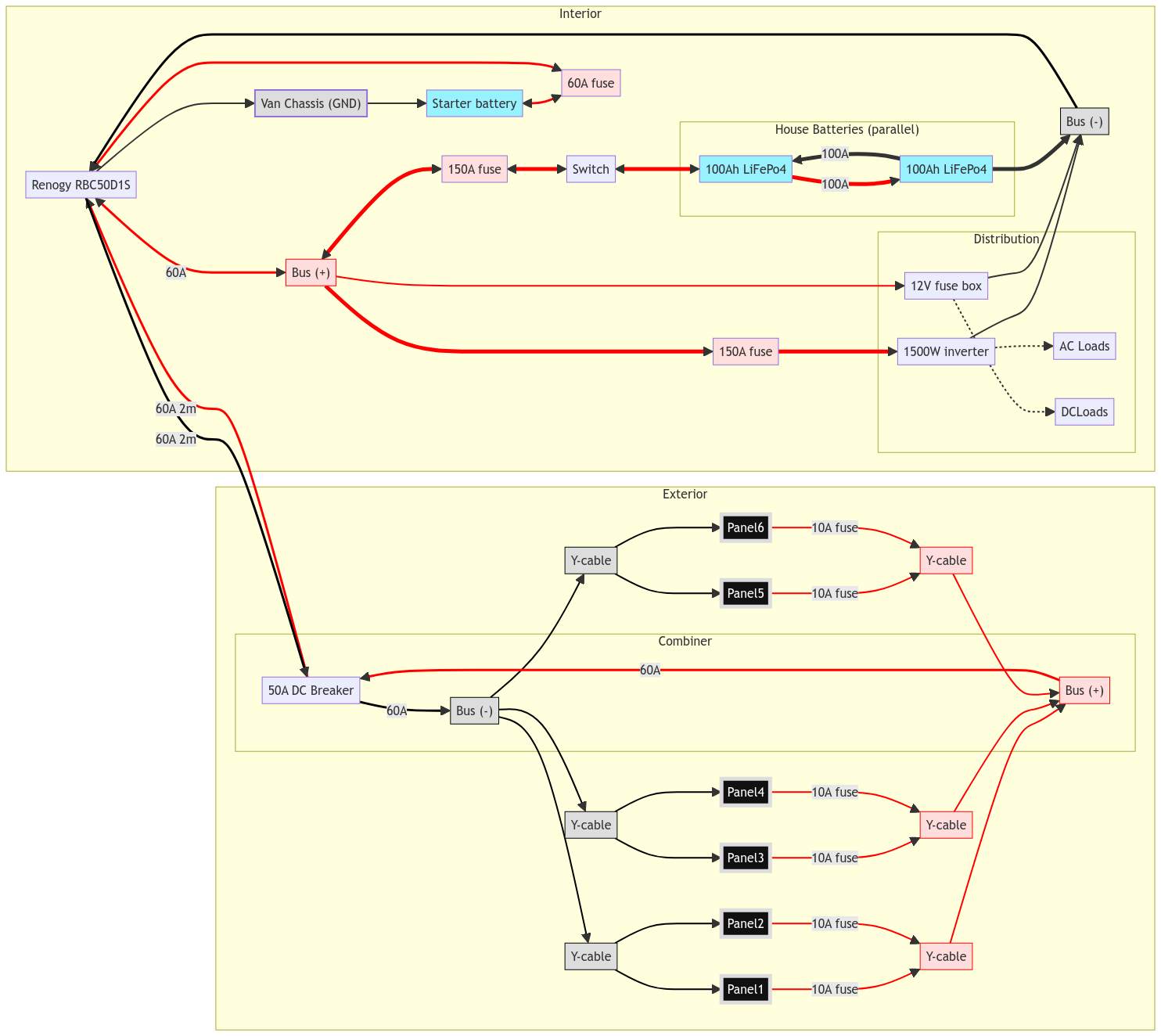I'm looking at putting the 50A Renogy DC-DC MPPT (RBC50D1S) in a van that has 6x120W (2S3P, all Y-adapterss) panels already mounted. The panels themselves have a Vmp/Voc of 18v/21.6V, so I intend to rewire them as 1S6P to stay under the 25v max PV limit. The Renogy datasheet states a max solar input power of 660W, as far as I understand it, that means I'm missing out on a theoretical ~60W in ideal conditions. Because conditions are rarely ideal I think the overpanelling isn't too extreme. Please tell me if I'm way off here.
My first question is: what current from panels->charger should I be designing for? The panels themselves have an Isc of 7.72A, so as far as I can tell the Renogy could never pull 50A from the panels under non-fault conditions. Would a 50A breaker (and corresponding cable gauge) between the panels and charge controller be appropriate? Could I go even lower?
I want to combine the 6 panels before they ingress to the van, but this means weatherproof connections. It seems like there's no MC-4 y-adapters rated to 50A, not to mention the difficulty of attaching an appropriate sized cable to the connector. Does anybody know of a solution smaller than a DIN rail in a residential "combiner box" that I can safely use?
My first question is: what current from panels->charger should I be designing for? The panels themselves have an Isc of 7.72A, so as far as I can tell the Renogy could never pull 50A from the panels under non-fault conditions. Would a 50A breaker (and corresponding cable gauge) between the panels and charge controller be appropriate? Could I go even lower?
I want to combine the 6 panels before they ingress to the van, but this means weatherproof connections. It seems like there's no MC-4 y-adapters rated to 50A, not to mention the difficulty of attaching an appropriate sized cable to the connector. Does anybody know of a solution smaller than a DIN rail in a residential "combiner box" that I can safely use?
Last edited:



